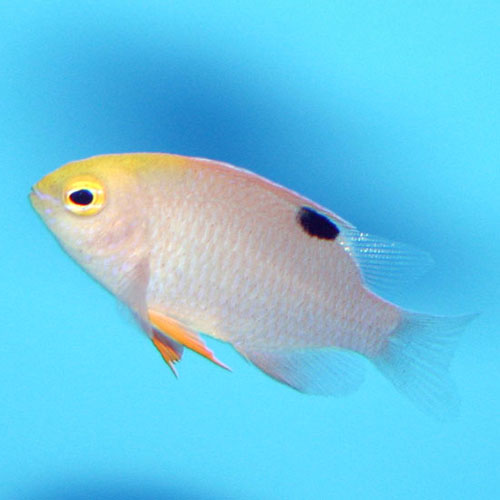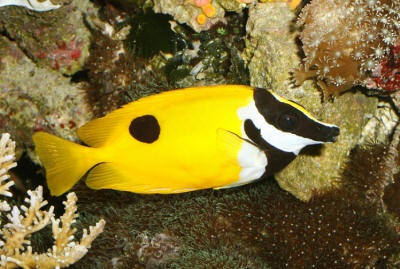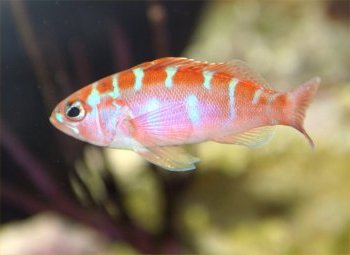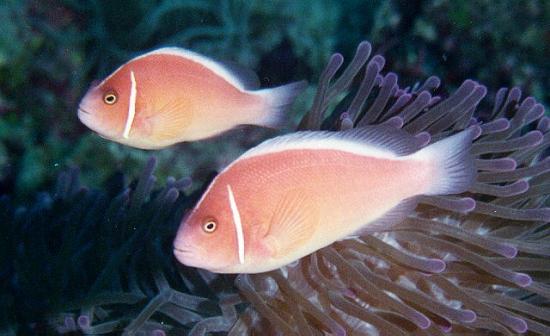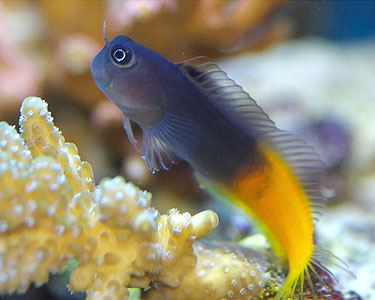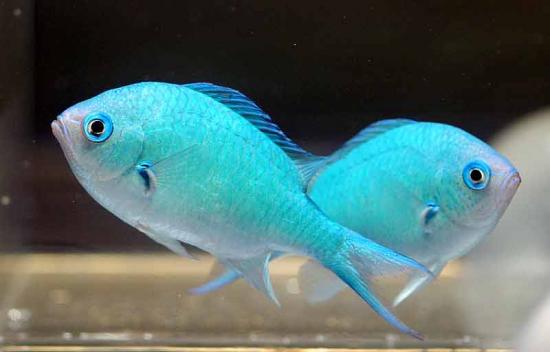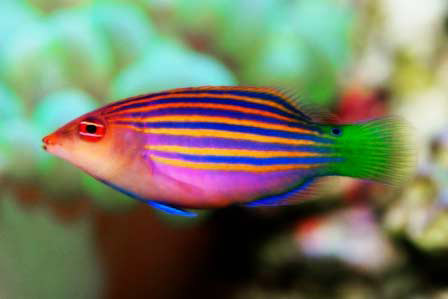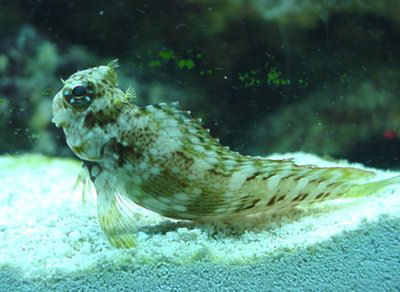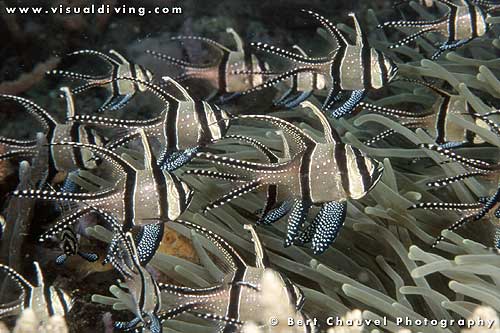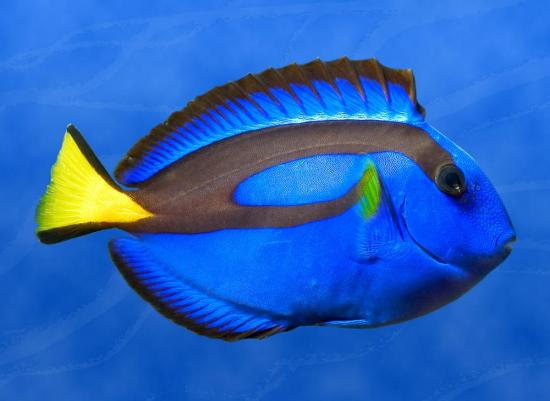-
Posts
11,637 -
Joined
-
Days Won
40
Content Type
Profiles
Forums
Gallery
Everything posted by CFOh
-
Nope, none float but very good strong cleaner..
-
A touching commercial that rubs the deepest part of your heart.
-
Social Worker (English)
-
Office of the Public Guardian Commercial 2012 on "Ah Ma" Family
-
Hope (English)
-
Singlish 16: Anti-gambling Commercial by Dr. Jiajia (with English subtitles)
-
Emmanuel Kelly The X Factor 2011 Auditions Emmanuel Kelly FULL
-

Huffing and Puffing For Dinner (lionfish feeding)
CFOh replied to CFOh's topic in FOWLR (Fish-only with Live-rock)
http://news.sciencemag.org/sciencenow/2012/02/video-huffing-and-puffing-for.html?ref=hp -
Video: Field and aquarium observations of lionfish blowing jets of water at prey fishes. Water jets may benefit lionfish by confusing or disorienting prey, or by increasing the incidence of headfirst capture. Naïveté of Atlantic prey fishes to this predatory strategy may be contributing to the success of the lionfish invasion. - Huffing and Puffing For Dinner http://news.sciencemag.org/sciencenow/2012/02/video-huffing-and-puffing-for.html?ref=hp Reference Invasive red lionfish Pterois volitans blow directed jets of water at prey fish MEPS 448:1-5 (2012) - doi:10.3354/meps09580 http://www.int-res.com/abstracts/meps/v448/p1-5/ PDF: http://www.int-res.com/articles/feature/m448p001.pdf Abstract Field and laboratory observations of feeding by invasive Pacific red lionfish Pterois volitans were conducted during June through August of 2008, 2009 and 2010 near Lee Stocking Island, Bahamas. Observations of this invasive marine predator revealed a previously undocumented piscivorous behavior. While slowly approaching prey fish, lionfish produce jets of water directed toward their prey. These jets may confuse or distract prey, and often result in prey fish facing the attacking lionfish, increasing the probability of head-first capture and swallowing. While a variety of fishes are reported to create directed water jets, to our knowledge, this is the first report of a fish that does so during the capture of fish prey. This behavior may confer a high degree of predatory efficiency, and thus contribute to the dramatic success of this Pacific invader of tropical Western Atlantic and Caribbean coral reefs.
-
Science News in sciencedaily.com http://www.sciencedaily.com/releases/2012/03/120307145422.htm
-
wiki info http://en.wikipedia.org/wiki/Gal%C3%A1pagos_catshark
-
http://www.wired.com/wiredscience/2012/03/galapagos-catshark/ Scientists conducting deep-sea dives around the Galapagos Islands have identified a new species of shark. Part of a family known as a catsharks, the new species is about 1.3 feet long, roughly the same size as a typical housecat. Catsharks (also sometimes known as dogfishes) are one of the largest families of sharks. The new species — named Bythaelurus giddingsi — was identified from seven specimens during two submersible treks in 1995 and 1998. Researchers have suggested the Galapagos Catshark as the common name of the new species. The seven specimens were taken to the California Academy of Sciences in San Francisco, where scientists compared them to other known catsharks. B. giddingsi individuals are chocolate-brown and have pale, leopard-like spots randomly distributed on their body. This distinguishes them from other closely related species, which are typically dusky or possess a straight line of spots. The arrangement of spots on each Galapagos Catshark appears to be unique, with most individual sharks having an identifying spot on one side that is smaller, larger, or differently shaped than the opposite-side spot. The description of the new species appears March 5 in Zootaxa. Sharks in many places around the world face extinction from human activity, such as commercial and recreational fishing. Researchers estimate that 100 million sharks are killed each year. As top-level predators, sharks are necessary to keep ecosystems in balance. Because the Galapagos Catshark is only found in one place, researchers fear it may be more susceptible to extinction pressures.
-
Choosing fish for a reef tank can be a daunting task, but one experienced reefer makes it easier by describing his top five picks for beginners, along with five they should avoid. When planning your first aquarium, it seems there are an overwhelming number of fish to choose from. While having many options is great, it can be difficult to discern what species make great reef inhabitants and which are less than ideal. There are a large number of appropriate choices of aquarium residents for amateur hobbyists, depending on factors such as experience, resources, and the amount of time they have to dedicate to aquarium keeping. Like every seasoned aquarist, I have my own list of top picks, and I’d like to present five somewhat uncommon species that are all but guaranteed to do well in your tank. I’m also offering a list of five species that are too often recommended to beginners but don’t do well for a variety of reasons. Before adding any fish, make sure you research their needs, check that they are compatible, and fully cycle your tank. Five Great Fish for New Aquarists Talbot’s Damsel(Chrysiptera talboti) If I had to designate the best species for a beginner, I would pick the Talbot’s damsel (Chrysiptera talboti) without hesitation. I admit that’s quite a bold statement when you consider that pomacentrids, the damselfishes and clownfishes, make up the group of most widely collected and sold types of ornamental aquarium fish. One of the drawbacks of some of the more popular damsels, such as clownfishes and those in the genus Dascyllus, is that they are highly aggressive and territorial. Some even grow to a relatively large size. The popular alternative to such damsels are members of another damsel genus, Chromis. There are some concerns regarding the hardiness these species, however, which I will later address. Talbot’s damsel is an alternative to these options. This species is extremely hardy, stays at a manageable size, and is only moderately aggressive compared to some of its larger cousins. Talbot’s damsel will live a long life in captivity whether it is kept alongside noncongeners or in small groups with its own kind (I recommend buying and adding them together if you wish to keep multiple fish). C. talboti is primarily a zooplanktivore that feeds off floating plankton in the water column, readily accepting dried, freeze-dried, frozen, and other prepared aquarium foods for omnivores. This species is bold (not to be confused with aggressive) and will venture out to new surroundings rather than act reclusive like many other smaller fish. It’s also readily available and not overly expensive in comparison to other appropriate small beginner fish. Rabbitfish (Siganus spp.) Reef aquarists with moderately sized systems often desire a herbivorous resident to keep plant and algae growth in check. Surgeonfish are often a popular choice, but they have a variety of drawbacks that include issues with territorial aggressiveness, size, and hardiness (including diet and disease). Other herbivores, such as the combtooth blennies, consume only a limited amount of green matter. While not quite as uniquely colored as surgeons, rabbitfish are a great compromise suitable for many different types of aquaria. In particular, rock/reef-dwelling members of the Siganus genus, which stay under a foot in length, are versatile enough to navigate tanks filled with sessile invertebrates and, with proper planning, to be great additions to larger rough-and-tumble predator tanks. The commonly available species in the trade are S. doliatus, S. magnificus, S. puellus, S. uspi, S. virgatus, and S. vulpinus. All have relatively similar care requirements. Most specimens top out at 8 to 9 inches and grow relatively slowly in comparison to other high-metabolism herbivorous fish. Feeding is relatively simple as long as you consider that vegetable matter for them to forage on is a must. Flakes and pellets with Spirulina or other types of algae as their main ingredient or dried kelp (nori) sheets are all acceptable, though I would encourage you to supplement their diet with planktonic meaty foods, such as mysids and krill. While talking about rabbitfish, it should be noted that all species have venomous spines in the rays of their dorsal fins and should be treated with caution while handling. If at all possible, avoid netting these fish and instead use a bag or bucket to catch them under water. Chalk Bass (Serranus tortugarum) Aquarists are always looking for unique, vibrantly colored fish that stay relatively small and peacefully coexist within the rockwork of crowded reef aquaria. Fairy wrasses (Cirrhilabrus spp.) fit the bill, but their high price can be unattractive to new aquarists. Others, such as hawkfish, are the right size and price, but ornamental crustaceans might disappear as they grow larger. One of my favorite recommendations in terms of size, temperament, hardiness, and price point is the chalk bass(Serranus tortugarum), a diminutive basslet from the Atlantic. This species is typically found in close association with the benthic regions of intertidal reef zones, making it ideal for use in small reef aquaria. Chalk bass are slow to mature, and adults rarely get larger than 3 inches. They are resistant to protozoan disease, bacterial infections, and temporary declines in water quality, making them a great choice for the inexperienced aquarist. The one drawback is that they are initially reclusive in aquaria, but a subdued lighting scheme and a diet of finely chopped meaty foods of marine origin will encourage them to come out into the open. Provided enough room, this species can be introduced simultaneously with members of its own kind or kept individually. Pink-Skunk Clownfish (Amphiprion perideraion) Clownfish are another dominant offering in the marine aquarium trade. The most common and desired by far are Amphiprion ocellaris and A. percula, which in the past decade have been made even trendier via color variations produced through selective breeding by many of the hobby’s larger commercial outlets. Another popular choice of tank-reared clownfish, and an admittedly eye-catching one that can be bought at a reasonable price, is Premnas biaculeatus, commonly known as the maroon clownfish. The drawback to this species is that it grows rather large in comparison to other clowns and has an attitude to match, being quite territorial and aggressive. A compromise concerning price point, size, and aggression is the pink-skunk clownfish (A. perideraion). This species rarely exceeds an inch in captivity, which makes it more versatile than some of the other larger clownfish in the trade. It is my anecdotal observation that, while A. perideraion will defend a territory, such as an anemone, it isn’t quite as boldly aggressive as other species of clownfish. Members of this species, like many damsels, are a great prospect for those new to marine aquariums because they will quickly acclimate to a closed environment and accept prepared foods. I would strongly encourage you to seek out captive-reared specimens, as captive-bred clownfish are less likely to contract or carry illnesses often associated with wild clownfish. Bicolor Blenny (Ecsenius bicolor) Though they are not rare in the ornamental aquarium trade, Ecsenius spp. are often ignored or passed over by aquarists for other members of the Blenniidae family. E. midas is likely the most popular of the genus, with its vibrant coloration and outgoing propensity to swim above the rockwork into the water column to dine on zooplankton. But I would like to highlight a smaller cousin of the Midas, the bicolor blenny (E. bicolor). Though its appearance varies based on its collection location and diet, it is easy to see where this blenny’s common name comes from, as it is half dull brown and half vibrant orange in color. Bicolor blennies typically remain small and are less likely to decimate their primary food source, algae growths, in the aquarium. If there is a lack of algae, they tend to transition to prepared fare, such as dried flakes and pellets with a high content of marine plant or algae matter and chopped foods of marine origin, much more easily than their larger combtooth cousins. Additionally, they tend to have a peaceful disposition and are not overly expensive. Five Inappropriate Choices Chromis species Chromis is a large genus, comprising over 80 species, that is important in the aquarium trade. By far, the most popular or common species seen in livestock retail outlets worldwide is the green chromis (C. viridis, though some importers still erroneously label it C. cyanea). Other commonly available species include the blue chromis (C. cyanea), Vanderbilt’s chromis (C. vanderbilti), and the blackbar chromis (C. retrofasciata). Their popularity is due to their typically small size and lack of aggression. In large reef aquaria, a small school of these “starter” fish can make an amazing display amid various growing cnidarians as the shimmer of the lights glimmers against their scales. What’s the downside to these seemingly amazing fish? As my mentor and friend Bob Fenner once commented in a correspondence, these damsels “die like proverbial flies.” Unlike other damsels, Chromis species have a much higher death rate in collection, shipping, and acclimation. And unlike other members of the family, they do not, in my opinion, adapt to smaller settings, even in nonpermanent holding and quarantine. In these close quarters, they also tend to display more aggression due to a lack of territory, often until only one is left. Chromis spp. also rarely recover from physical trauma, be it from aggression or handling, as damage to their thin but sensitive scales makes them more susceptible to infection, disease, and further bullying. In captive setups, they are also often the first to show stress in response to environmental issues, such as those associated with dissolved organics, temperature, and specific gravity. Knowing all of this, I cannot recommend them for smaller setups (even those larger than what is typically termed a nano) or to new aquarists/for new setups. Put succinctly, their hardiness is vastly overstated. Six-Line Wrasse (Pseudocheilinus hexataenia) The six-line wrasse (Pseudocheilinus hexataenia) is often the first species of wrasse introduced to new aquarists. Its relatively small size, engaging personality, and voracious appetite for aquarium pests, such as pyramidellid snails, polychaete (bristle) worms, and others, make it a staple among marine ornamental dealers. Unfortunately, it is a highly active predator of small benthic creatures and is indiscriminate in its tastes. A single wrasse can effectively decimate the desirable microcrustaceans and zooplankton populations. This decreases the biodiversity in a reef aquarium where the aforementioned prey are an important food source for invertebrates, both sessile and motile, as well as other fish. The ability of a substantial population of microcrustaceans and other benthic fauna to perform as detritivores in aquaria should also not be underestimated. Pseudocheilinus spp. also have a penchant for becoming very territorial once established, which, in smaller aquaria, can prevent the addition of other fish that inhabit the same niche. While this species is indeed hardy, and in some instances useful, the cons of adding a six-line wrasse to modern reef aquaria may very well outweigh the pros. Lawnmower Blenny (Salarias fasciatus) The combtooth or lawnmower blenny (Salarias fasciatus) is another staple in the ornamental trade. Despite its robust photogenic personality (it has a tendency to perch atop rockwork and sessile invertebrates), this species is most often employed as a nuisance algae eater. It is particularly popular with reef aquarists because it prefers pest algae, such as diatoms and Phaeophyta, but ignores many desirable species of macroalgae, such as Botryocladia spp. Combtooth blennies may partake in carnivorous fare, such as mysids or krill, but many do not, and the few that do don’t consume enough of it to meet their nutritional needs. Diet is indeed the main concern with the lawnmower blenny, as it is all too often employed in an aquarium that is far too small to support it with continual growth of algae, causing the animal to starve if not target fed with appropriate food. Lawnmower blennies are often recommended to new marine aquarists in new systems, but as a marine tank matures, the type of algae that dominates the system may change. Even if your system is large enough, the algae it supports may not be the kind your lawnmower blenny finds interesting. In regard to algae control, algae growth in itself is often not the issue but a symptom of a larger problem, such as nutrient control. In this case, an animal resigned to algae maintenance simply masks the underlying problem rather than correct it. Another misconception is that comb-toothed blennies will incorporate cyanobacteria (which is mistakenly called “algae” though it is a form of bacteria) into their diet when they in fact do not. This fish is also known to be extremely territorial with competitors (that is, other fish that consume algae or inhabit rocky areas), so the fact that this fish is often a first addition to a new aquarium compounds the problem even further. Banggai Cardinalfish (Pterapogon kauderni) There are multiple species of cardinalfish with attributes that make them ideal for captivity. Cardinalfish are found in shallow waters, sometimes in large schools, which makes them easy to collect. Most species stay under 4 inches and don’t require a large amount of swimming room, and healthy specimens readily take to prepared food. Some even mouthbrood (hold fry in their mouths), a behavior that makes captive-rearing relatively successful. While there are multiple suitable cardinalfish for the ornamental trade, the Banggai cardinalfish (Pterapogon kauderni) is by far the most collected and imported species in the United States. P. kauderni ships easily and is long lived, but it’s the species’ popularity that can make it an unwise choice. P. kauderni has a small total population size that was originally thought to be restricted to the Banggai Islands of Indonesia, hence the common name. Exact rates of decline and appropriate population sizes are difficult to cite, as cataloging and studying of said numbers was not widespread until 2000, which is at least half a decade after the Banggai cardinals first appeared in the trade. The total population is thought to be less than 3 million, with just under a million being exported between 2000 and 2005. Despite being relatively simple to breed in captivity because it is a mouthbrooder, commercial aquaculture of the species has been stymied by the free market, as specimens collected in the wild are much cheaper than those born in to captivity. Fortunately, some population pockets have been placed off limits or restricted by local law, but P. kauderni is still listed as endangered by the International Union for Conservation of Nature. For these reasons, I cannot responsibly recommend wild-caught members of this species despite their success rate in the aquarium. I would encourage you to persuade your dealer to request other species of cardinalfish or sell only captive-reared specimens of the Banggai cardinal. Pacific Blue Tang (Paracanthurus hepatus) One of the most highly prized surgeonfish in the US is the Indo-Pacific blue tang (Paracanthurus hepatus). Relative to many other specimens in the Acanthuridae family, the success rate of keeping P. hepatus in aquaria is high, with dedicated aquarists keeping specimens for longer than a decade. In properly maintained large aquaria, P. hepatus is a viable choice that can be sustainably collected. The species is inappropriate for many home aquariums due to its size and behavior, however. In response to its popularity and demand, many exporters in the last decade have begun shipping extremely small specimens, some less than an inch. These small juveniles do not ship or acclimate to captivity as well as midsized adolescents, and to further compound the issue, they are often sold to inexperienced or uneducated aquarists with aquariums as small as 20 gallons. Even worse is the higher susceptibility of P. hepatus to multiple health issues in comparison to other available livestock, such as head-and-lateral-line erosion, ich, and other protozoan diseases. Diet is also a concern for this surgeonfish, which expresses much more zooplanktivorous behavior than its relatives. Aquarists often fail to balance out its diet with a variety of meaty and algae-based foods. So while P. Hepatus is not an irresponsible choice in livestock or one to be avoided by all, I would assert that its employment should be left for hobbyists who can give this species the room and care it needs. Last Thoughts I am completely aware that would-be or new aquarists, even before buying their systems, often have in mind what residents they want for their new aquariums. This is fine, as with research, the new aquarist can plan the system around the must-have fish to provide them with an adequately sized and designed home. However, it is common for the wish list to include only livestock that the aquarist sees on a regular basis, which leads him or her to believe these are acceptable, easy residents. I hope I helped expand the palette of desired and appropriate animals for new aquarists. Rather than be limited to what your local dealer imports, be bold enough to request they bring in a larger, more appropriate variety. The overrated fish are not necessarily unsuited to aquaria; they are simply not as suited to as wide an audience as their popularity suggests. Likewise, the underrated fish are not without their cons either. But at the very least, you now have a heightened awareness of their suitability and potential of making great pets when provided the proper home and care.
-
Cannon LED Pendants, Aquatic Warehouse in San Diego CA.
-
Fyi, http://www.thejakartaglobe.com/home/coral-reef-off-coast-of-bontang-severely-damaged/507380
-
Upz for Tonight...... 1. PNG Zoas ~4polyps SGD20 6. Luminous Lime Green Monti ~4"+ SGD25 collected by nice bro 7. Zoas 7 >30 polyps SGD40 8. Zoas 8 >30 polyps SGD40
-
-
Fyi, http://reefapalooza2011.org/splash
-
Fyi, http://www.dfwmacna.com/
-
Fyi, MBI Workshop Marine Breeding Initiative Workshop 2012 July 28 , 2012 Cranbrook Institute of Science 39221 Woodward Avenue, Bloomfield Hills, MI 48303 http://www.mbiworkshop.com/
-
Fyi, http://www.spacecoastreefclub.com/wordpress/
-
Fyi, June 9, Fairborn, OH - http://www.saltgeeks.com/
-
Fyi, http://www.sustainablereef.com/reefsmart/


